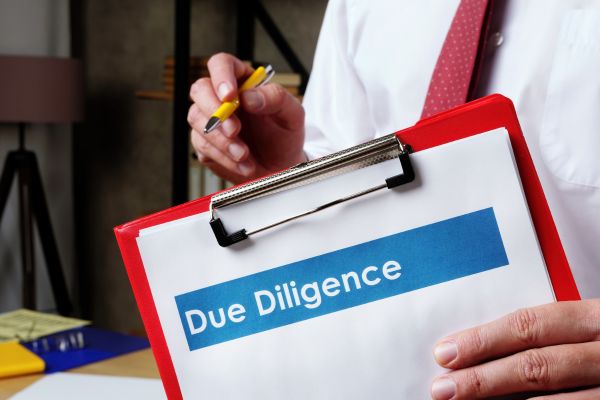When companies decide to merge or one decides to acquire another, excitement usually fills the air. Big announcements are made, stock prices move, and everyone imagines the future. But here’s the thing—none of that matters if you skip the groundwork. And that groundwork is called due diligence in M&A. Without it, deals fall apart, and sometimes companies lose millions. So, let’s break it down in plain, no-fluff language.
What Does Due Diligence in M&A Really Mean?
In simple terms, due diligence in M&A is the process of checking under the hood before you buy the car. Sure, the vehicle looks shiny from the outside, but what about the engine, the history, or the hidden repairs? That’s what this process does—it verifies what’s real, what’s risky, and what’s worth paying for.
In mergers and acquisitions, due diligence is a deep investigation into a target company’s financials, legal standing, operations, culture, and even future potential. It’s basically the buyer’s chance to make sure they know exactly what they’re signing up for.
Why Is It So Important?
Here’s the deal: without proper due diligence in M&A, buyers could end up overpaying, inheriting unexpected debts, or walking into lawsuits they didn’t see coming. It’s like buying a house without checking if the foundation is cracked.
This step is crucial because it:
- Reduces risk
- Provides accurate valuation
- Highlights potential deal breakers
- Helps negotiate better terms
And honestly, let’s be real—no investor or board is going to green-light a multi-million-dollar deal without these checks.
The Key Areas of Due Diligence in M&A
Now, due diligence isn’t just about flipping through spreadsheets. It’s way broader. Here are the big areas companies usually focus on:
Financial Due Diligence
This is the first thing everyone thinks of. Buyers dig into revenue streams, debts, assets, cash flow, and historical performance. The goal is to figure out whether the target company’s numbers actually hold up. Because, let’s face it, PowerPoint slides can make almost any company look good.
Legal Due Diligence
Here’s where lawyers step in. They review contracts, employee agreements, intellectual property rights, lawsuits, regulatory compliance—you name it. If there’s even a hint of a legal issue that could cost millions, it needs to surface now, not after the deal is signed.
Operational Due Diligence
This area checks the inner workings—supply chains, production processes, technology systems, and even staffing. Buyers need to know if the business can scale or if it’s one disruption away from chaos.
Cultural Due Diligence
A lot of M&A deals flop not because of money but because of culture. If two companies’ values, leadership styles, or work environments don’t mesh, employees walk out and chaos follows. Cultural due diligence in M&A is often overlooked, but it can literally make or break the merger.
The Process: How Due Diligence in M&A Actually Works
So how does this go down in real life? Typically, it unfolds in stages:
First, the buyer signs a confidentiality agreement. No one wants sensitive company secrets spilled out. Then the target company shares data—lots of it. Think documents, reports, audits, contracts, everything. Teams of analysts, accountants, and lawyers review it all, ask questions, and sometimes dig even deeper if something looks suspicious.
This stage can take weeks, sometimes months, depending on the size of the deal. And yes, it’s a bit like detective work. One red flag in the paperwork can shift the entire negotiation or even kill the deal on the spot.
Common Challenges in Due Diligence
Let’s be honest—this isn’t always smooth sailing. Common hiccups include incomplete data, hidden liabilities, or unrealistic timelines. Sometimes sellers try to rush the process, hoping the buyer won’t notice cracks in the story. Other times, buyers underestimate how much work it really takes to comb through thousands of documents.
And then there’s the human side. Fatigue, politics, and even emotions can play a role. After all, M&A deals are rarely just about numbers—they’re about people too.
How Technology Is Changing the Game
A decade ago, due diligence in M&A meant rooms filled with paper files. Today, virtual data rooms and AI-driven analytics make it faster and more transparent. Buyers can scan through thousands of documents in hours, not weeks. Machine learning tools even flag inconsistencies or unusual patterns that humans might miss.
Still, while tech makes the process smoother, it doesn’t replace the human judgment needed to interpret those findings. A spreadsheet can’t tell you if the leadership team is secretly planning to resign after the deal.
Tips for Getting Due Diligence Right
If you’re ever on the buying side of an M&A deal, remember this: don’t rush it. Take the time to ask the uncomfortable questions. Challenge assumptions. Verify everything twice. And don’t ignore culture just because numbers look good.
It also helps to bring in external experts—lawyers, accountants, consultants—because let’s be real, no single person can master all the areas involved.
Wrapping It Up
At the end of the day, due diligence in M&A isn’t just a box to tick—it’s the backbone of a successful deal. It ensures that buyers aren’t walking blind into a mess and that sellers present a transparent picture of their business. Done right, it builds trust, reduces risk, and paves the way for growth.
So, whether you’re an investor, a founder, or just someone curious about how big business deals work, remember this: the real magic of M&A doesn’t happen in the flashy press release. It happens quietly, behind the scenes, in the due diligence phase. That’s where the future of the deal is truly decided.







